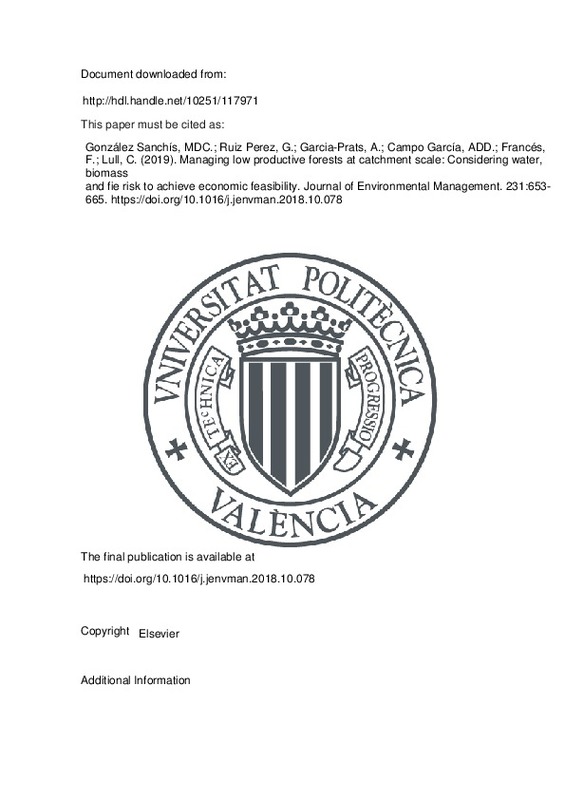JavaScript is disabled for your browser. Some features of this site may not work without it.
Buscar en RiuNet
Listar
Mi cuenta
Estadísticas
Ayuda RiuNet
Admin. UPV
Managing low productive forests at catchment scale: Considering water, biomass and fie risk to achieve economic feasibility
Mostrar el registro completo del ítem
González Sanchís, MDC.; Ruiz Perez, G.; Garcia-Prats, A.; Campo García, ADD.; Francés, F.; Lull, C. (2019). Managing low productive forests at catchment scale: Considering water, biomass and fie risk to achieve economic feasibility. Journal of Environmental Management. 231:653-665. https://doi.org/10.1016/j.jenvman.2018.10.078
Por favor, use este identificador para citar o enlazar este ítem: http://hdl.handle.net/10251/117971
Ficheros en el ítem
Metadatos del ítem
| Título: | Managing low productive forests at catchment scale: Considering water, biomass and fie risk to achieve economic feasibility | |
| Autor: | Ruiz Perez, Guiomar | |
| Entidad UPV: |
|
|
| Fecha difusión: |
|
|
| Resumen: |
[EN] Semi-arid forests are water limited environments considered as low-productive. As a result, these forests usually end up unmanaged and abandoned, with the subsequent wild fire risk increasing, water yield decreasing ...[+]
|
|
| Palabras clave: |
|
|
| Derechos de uso: | Reconocimiento - No comercial - Sin obra derivada (by-nc-nd) | |
| Fuente: |
|
|
| DOI: |
|
|
| Editorial: |
|
|
| Versión del editor: | https://doi.org/10.1016/j.jenvman.2018.10.078 | |
| Código del Proyecto: |
|
|
| Agradecimientos: |
This study is a component of the research projects: INTEGRA (CGL2011-28776-0O2), E-HIDROMED (CGL2014-58127-C3) and CEHYRFO-MED (CGL2017-86839-C3-2-R) funded by the Spanish Ministry of Science and Innovation and FEDER funds, ...[+]
|
|
| Tipo: |
|








![[Cerrado]](/themes/UPV/images/candado.png)


